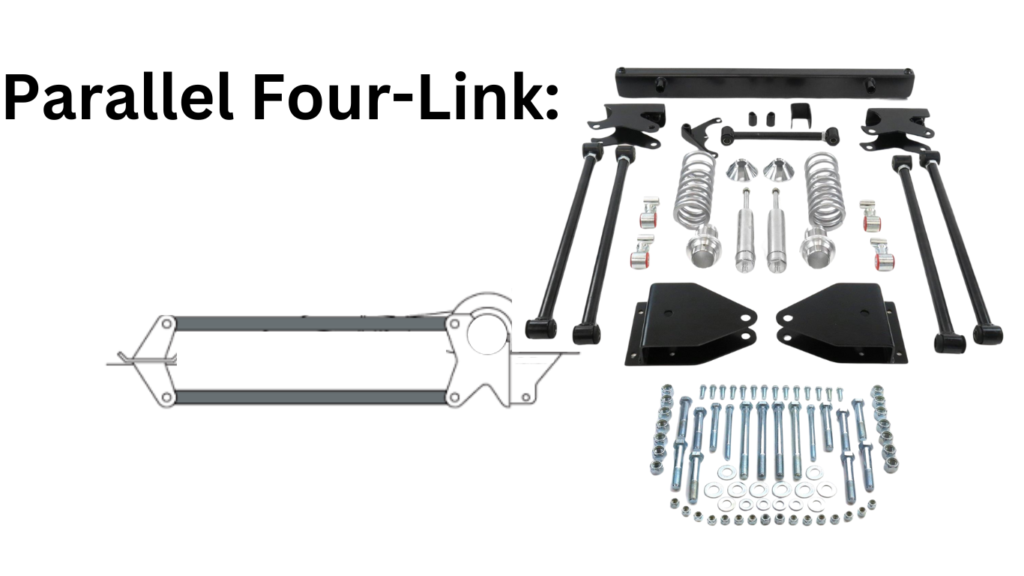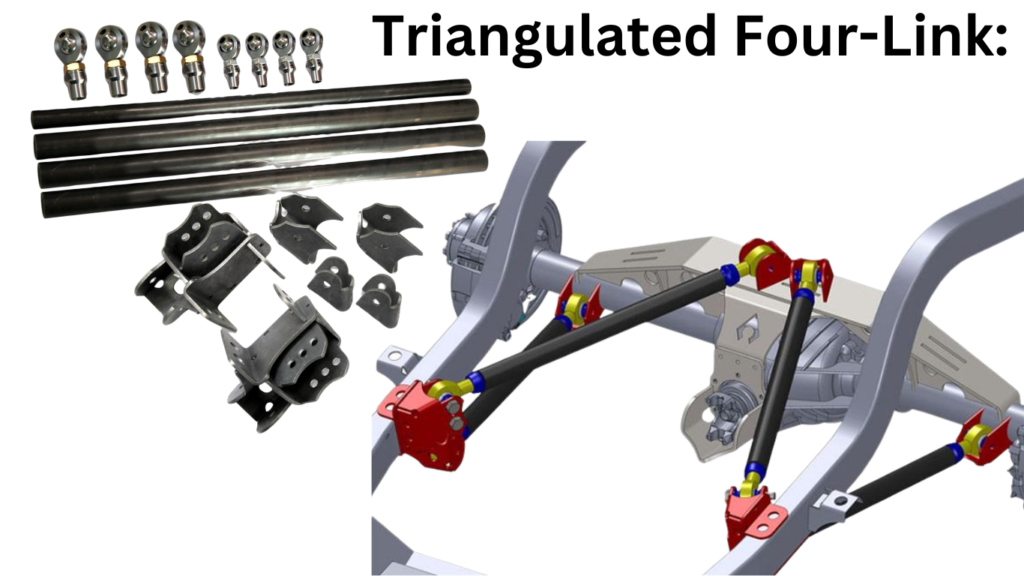Off-roading is an exhilarating adventure, demanding vehicles equipped with advanced systems to tackle rough terrain. Among these, the suspension system plays a crucial role. One such advanced setup is the four-link suspension system, known for its superior performance and adaptability in off-road scenarios.
Table of contents
What is a Four-Link Suspension System, You Might Ask?
Well, let’s dive into it. A four-link suspension system is a type of suspension design used primarily in off-road vehicles. It comprises four control arms (links) that connect the axle to the vehicle’s frame. This setup allows for precise control over the vehicle’s movement and improves stability, especially on uneven terrains.
The four-link suspension system is a popular choice for off-road vehicles due to its enhanced articulation and stability. As of 2024, here are some new off-road vehicles that come equipped with four-link suspension:

1. Jeep Wrangler Rubicon:
The Jeep Wrangler Rubicon is known for its off-road prowess and comes with a four-link suspension setup, which provides superior wheel articulation and stability over rough terrain.

2. Ford Bronco:
The new Ford Bronco, particularly in its higher trim levels like the Badlands and Wildtrak, features a sophisticated suspension system, including a four-link rear suspension that enhances its off-road capabilities.

3. Toyota Land Cruiser:
The latest Toyota Land Cruiser models are equipped with advanced suspension systems, including a four-link setup, to ensure excellent performance on challenging off-road trails.

4. Ram 2500 Power Wagon:
The Ram 2500 Power Wagon is designed for serious off-road enthusiasts and includes a four-link coil rear suspension for improved articulation and ride quality.

5. Mercedes-Benz G-Class:
The Mercedes-Benz G-Class, especially the G550 and AMG G63 variants, feature a robust four-link suspension system that contributes to its legendary off-road performance.
These vehicles are designed to handle tough off-road conditions, and their four-link suspension systems play a crucial role in their capability to tackle rough terrain with ease.
Key Components and Design of The Four-Link System
Upper and Lower Links:
These are the main control arms, with two positioned on top of the axle (upper links) and two below (lower links). The links work together to manage the axle’s position and movement.
Mounting Points:
The points where the links attach to the frame and axle. Proper alignment of these points is critical for optimal performance.
Bushings and Joints:
These components allow for flexible movement and absorb vibrations, providing a smoother ride

Advantages of Four-Link Suspension in Off-Roading
1. Improved Articulation: The four-link setup allows each wheel to move independently, which is crucial for maintaining traction on uneven surfaces.
2. Enhanced Stability: By controlling the axle’s movement more precisely, a four-link suspension reduces body roll and enhances overall stability, even at higher speeds.
3. Better Load Distribution: This system helps in evenly distributing the vehicle’s weight, reducing stress on individual components, and extending their lifespan.
4. Customizability: Four-link suspensions are highly customizable, allowing off-roaders to adjust the setup according to their specific needs, whether it’s for rock crawling, mudding, or desert racing.
The Two Types of Four-Link Suspensions

1. Parallel Four-Link: The links run parallel to each other and the vehicle’s frame, offering straightforward installation and maintenance.

2. Triangulated Four-Link: The upper links are angled, forming a triangle with the lower links and the vehicle’s frame. This design provides better lateral stability without the need for a panhard bar.
Installing a Four-Link Suspension System
1. Preparation: Ensure you have all the necessary tools and components. Lift the vehicle securely and remove the old suspension system.
2. Mounting the Links: Attach the upper and lower links to their mounting points on the frame and axle. Ensure all bolts are tightened to the manufacturer’s specifications.
3. Adjustments: Fine-tune the link lengths and angles to achieve the desired axle position and movement. Proper alignment is crucial for optimal performance.
4. Testing: After installation, take the vehicle for a test drive on various terrains to ensure the suspension system works as intended. Make any necessary adjustments.
NOTE: One thing to consider is having a professional shop install an after-market Four-Link system. It can be very technical.
Maintenance Tips:
- 1. Regular Inspections: Check for any signs of wear and tear, especially on bushings and joints. Replace any damaged components promptly.
- 2. Lubrication: Keep all moving parts well-lubricated to reduce friction and prevent rust.
- 3. Alignment: Regularly check and adjust the alignment to maintain optimal performance and prevent uneven tire wear.
Conclusion: The Future of Off-Road Suspensions
The four-link suspension system is a game-changer in the world of off-roading. Its superior control, stability, and adaptability make it a preferred choice for enthusiasts looking to push the limits of their adventures. Whether you’re a seasoned off-roader or a beginner, upgrading to a four-link suspension can significantly enhance your vehicle’s performance and your overall off-roading experience. So gear up, hit the trails, and experience the difference a four-link suspension can make.
